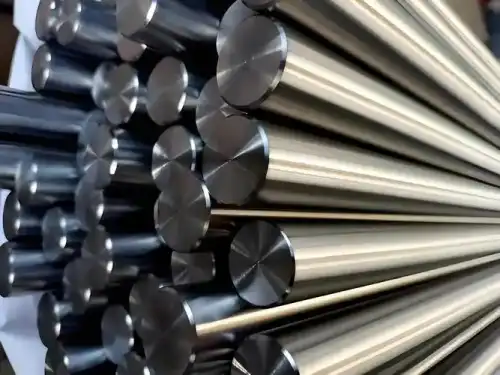Titanium metal is widely used in aerospace, medical equipment, high-end consumer products, and other fields due to its high strength, lightweight, corrosion resistance, and other characteristics. However, many people are concerned about: What is the hardness of polished titanium? Is it suitable for high wear-resistant scenarios? This article will analyze the hardness data, influencing factors, and improvement methods of titanium in detail to help you better select and apply titanium materials.

1. Hardness of titanium: pure titanium vs. titanium alloy
The hardness of titanium varies depending on the material composition and processing state (such as annealing, cold working, and heat treatment). The following is the hardness range of common titanium metals:
- Pure titanium (industrial grade, such as Grade 1-4)
Annealed hardness: 120~200 HV (about HRB 70~90)
Hardness after cold working/polishing: 200~250 HV (slightly improved, but still soft)
Features: close to stainless steel (such as 304 stainless steel), but softer than most steels.
- Titanium alloy (such as Ti-6Al-4V, Grade 5)
Annealed hardness: 280~350 HV (about HRC 30~36)
Hardness after heat treatment/polishing: 350~400 HV (HRC 36~40)
Features: Harder than pure titanium, close to some tool steels, but still lower than hardened steel (HRC 50+).
2. Does polishing affect the hardness of titanium?
Polishing itself does not change the hardness of titanium because it only affects the surface finish, not the internal structure of the material. However, the following situations may affect the hardness performance:
Cold work hardening: Mechanical polishing may cause slight hardening of the surface (but the improvement is limited).
Surface treatment, such as anodizing and nitriding, can greatly increase the surface hardness (such as 800~1000 HV).
3. Hardness of titanium compared with common metals
| Material | Vickers hardness (HV) | Rockwell hardness (HRC) | Features |
| Pure titanium (annealed) | 120~200 | HRB 70~90 | Soft, corrosion resistant |
| Ti-6Al-4V | 280~400 | HRC 30~40 | High strength and lightweight |
| 304 stainless steel | 200~250 | HRB 85~95 | Corrosion resistant, medium hardness |
| Quenched 45 steel | 500~600 | HRC 50~55 | High hardness, but heavy |
| Conclusion: Titanium is harder than aluminum and softer than hardened steel, but it is the first choice for high-end applications due to its high specific strength (strength/weight ratio) and corrosion resistance. | |||
4. How to improve the hardness of titanium?
If your application requires higher hardness, the following methods can be used:
Heat treatment (such as solution treatment + aging treatment, suitable for titanium alloys)
Surface nitriding (hardness can reach 800~1000 HV, suitable for wear-resistant parts)
Anodizing (forms a ceramic layer, enhances surface hardness)
Shot peening (improves fatigue strength, slightly increases hardness)
5. Application scenarios of polished titanium
Although titanium is not the hardest, it has excellent overall performance and is often used in:
Medical field: artificial joints, dental implants (biocompatibility + corrosion resistance)
Aerospace: aircraft engine components, spacecraft structures (lightweight + high strength)
High-end consumer goods: watch cases, jewelry (beautiful after polishing + scratch resistance)
6. Conclusion
The hardness of polished titanium depends on the material type and processing method:
Pure titanium: softer (about 200 HV), suitable for corrosion-resistant but low-load scenarios.
Titanium alloys (such as Ti-6Al-4V): higher hardness (350~400 HV), suitable for high strength requirements.
If higher hardness is required, surface treatment technologies such as nitriding and anodizing can be used.
The real advantage of titanium lies in "lightweight + high strength + corrosion resistance", rather than simply pursuing hardness. The correct selection of titanium materials and treatment processes can maximize its performance!











